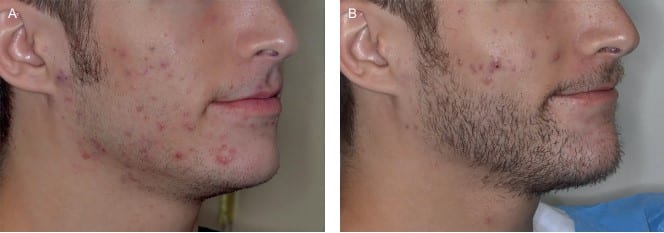Many people associate facial hair with masculinity, and for many trans men, growing a beard is a priority when transitioning. Unfortunately, not all are lucky enough to find the process of growing a beard smooth sailing, regardless of their gender identity.
Fortunately, a beard transplant can help people naturally grow facial hair, giving them the masculine appearance they seek. If you’re in the process of transitioning and would like more facial hair, here’s what you should know about the beard transplant Miami process and what to expect.
What is Facial Hair?
No matter their gender, most people have facial hair. Certain sex hormones impact how visible or thick the hair is, making men often have darker, thicker, and longer hair on their faces. Genetics also plays a part in the thickness and amount of facial hair.
Some people have light, downy hair on their cheeks and upper lip. Others have thick, dark hair or even a full beard.
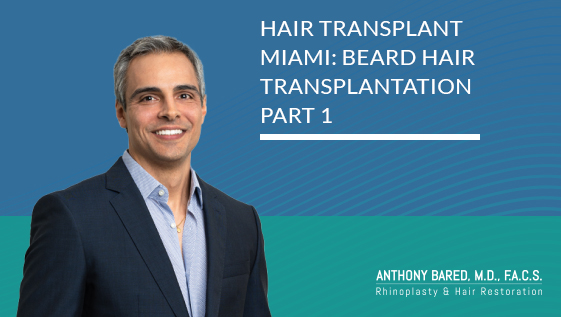
You won’t have a full beard immediately following the transplant.
For people assigned male at birth, puberty usually triggers the growth of prominent facial hair. An increase in the hormone testosterone stimulates this hair growth.
Facial hair usually grows in a specific pattern, with hair above the upper lip appearing first, followed by the hair on the sideburns, chin hair, and finally, cheek hair. Some men also grow hair on their necks.
How much facial hair a person will grow largely depends on the number of hair follicles on their face, according to Gillette. The number of hair follicles is in many ways determined by genes. Some men naturally have fewer facial hair follicles than others.
What Factors Affect Facial Hair Growth for FTM Patients?
Hormonal and genetic factors influence the volume of facial hair an FTM person will develop. If your parents or siblings have a natural affinity for full beards or mustaches, it is likely that you will also be able to observe significant facial hair growth following the transition.
Hormone replacement therapy (HRT) can also kickstart beard growth in FTM patients. Taking testosterone essentially starts a second puberty, which may allow for new hair growth.
Although some transgender patients do experience an increase in facial hair as a result of taking testosterone, not everyone does. It is also important to remember that some people can see facial hair growth without taking hormones.
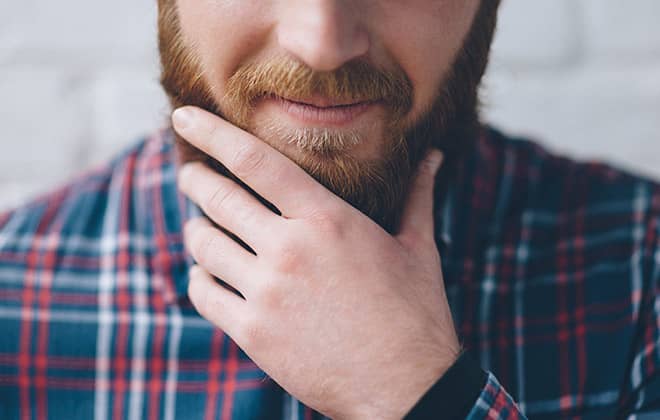
What Is a Beard Transplant?
If you’re struggling to grow a beard, a beard transplant could be an effective way to get a full and lush facial hair style.
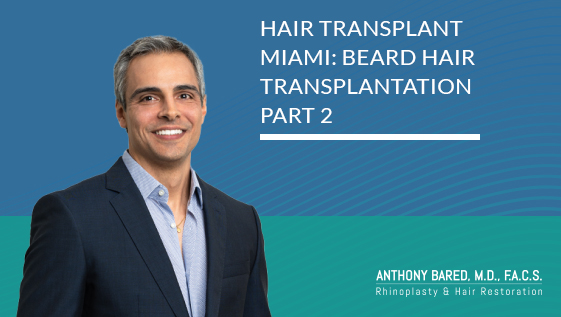
Hair Transplant Miami: Beard Hair Transplantation – Part 2
A beard transplant is a type of hair restoration procedure. It takes hair from one area of the body, like the scalp, and transplants it into another, such as the cheeks or chin. The transplanted hair permanently grows in the new location.
The transplanted hair is harvested from the patient’s own body, so there is little risk of rejection. Often, sources for the harvested hair include the sides or back of the head.
Once the hair is harvested, it won’t grow back in the source area, so it’s important to remove hair strategically. Usually, there is enough hair remaining from the harvested location that the missing hairs aren’t obvious.
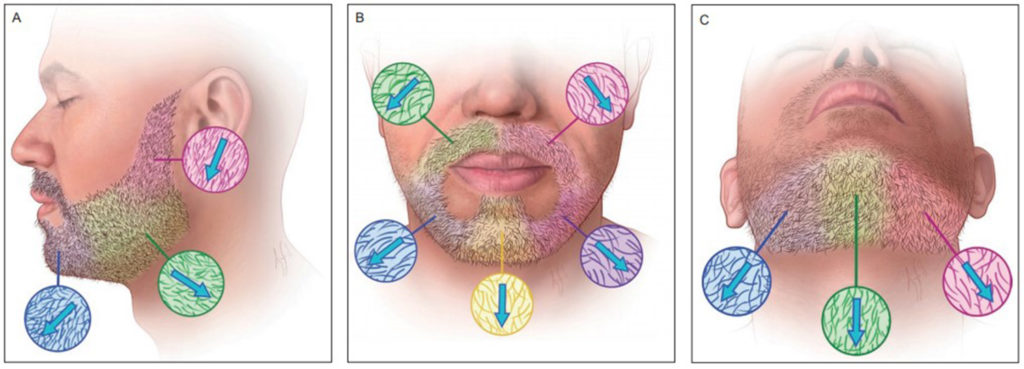
Beard Transplant Methods
A hair restoration surgeon will determine which procedure to use in a beard transplant based on the patient’s desired result and the number of follicles necessary, which could mean either of two different methods.
Follicular Unit Transplantation (FUT)
Follicular unit transplantation is also known as follicular unit grafting (FUG) or the “strip” method. When using the FUT method, a surgeon will cut away a strip of hair from the back or sides of the scalp, according to Healthline.
The strip is small, usually no more than 1.5 cm in width. Its total size is based on the number of follicles the surgeon needs for the transplant.
After removing the strip of hair follicles, the surgeon will stitch the opening in the scalp closed. A thin scar will remain at the site of the incision after it’s healed.
The surgeon then carefully transplants the harvested follicles into the facial skin, depending on the beard restoration goals of the patient. They’ll place the follicles in a pattern that looks natural, and that matches the pattern of existing facial hair as much as possible.
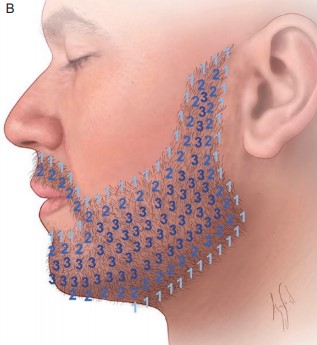
Follicular Unit Extraction (FUE)
While FUT is still used from time to time, it has largely been replaced by follicular unit extraction (FUE). Unlike FUT, which requires harvesting a strip containing thousands of hair follicles, FUE harvests the follicles individually.
The plastic surgeon uses a micro punch – which is essentially a small drill – to extract the hair follicles. This tool creates a tiny hole in the tissue near the follicle, which allows them to be removed without damage.
Since FUE removes each follicle group one by one, it can be a more painstaking process compared to FUT. The procedure leaves only tiny scars, though, which can be ideal for people who want to wear the hair on their head short.
Once the follicles are harvested, the process of FUE is similar to that of FUT. The surgeon will transplant the follicles into the areas of the face where the patient wants to grow a beard.
Source of the Donor Hair

The entire process of facial hair transplantation can take anywhere from two to eight hours for ideal candidates, depending on the number of grafts needed.
If the hair comes from a different source – like a sibling or donor – the transplant recipient would need to take immune-suppressing drugs, according to WebMD.The back and sides of the head are common harvest areas for a few reasons. Usually, the hair that grows in those areas is resistant to the hormone that triggers male pattern hair loss. There also tends to be an ample amount of hair in those areas.
If you don’t have a lot of hair on the sides or back of the scalp, you can talk to your surgeon about other potential donor sites, such as the arms or legs. The amount of hair you have available may affect your candidacy for the procedure.
Risks of a Beard Transplant
Any surgical procedure, including a beard transplant, carries its own risks and potential complications. Infection can occur at the incision site, and in cases where FUT is employed, the resulting scar can be quite noticeable.
It’s also likely that there will be some swelling in the harvested and transplanted area after the surgery. Some men might notice bleeding or crusting of the follicles. Following your surgeon’s instructions before and after the transplant will help to reduce the risk of infection, bleeding, and other side effects.
What to Expect During a Beard Transplant
Discuss with your surgeon about your desired look for facial hair, such as a beard, prior to the transplantation. They will then sketch a pattern on your face as a reference when transferring hairs from the donor.
You might also have a discussion about which donor hairs will work best for your new beard.
Depending on the color and texture of existing facial hair, your surgeon might use the hair from your scalp, or they might recommend hair from another part of the body.
Once the design is chosen and the donor site is selected, the surgeon will begin the process of harvesting the hair. You’ll typically be given a local anesthetic to numb the donor area and might receive an oral sedative.
Once the follicles have been harvested, they are prepared for transplantation and strategically placed in the facial area. The entire process of facial hair transplantation can take anywhere from two to eight hours, depending on the number of grafts needed.
What to Expect After a Beard Transplant
Your hair transplant surgeon will send you home with a list of instructions for the recovery period after the transplant.
You’ll likely be told not to get the area wet for a few days and to take it easy for about a week. You can usually expect to see some swelling and redness in the face after the procedure.You won’t have a full beard immediately following the transplant. In fact, be prepared for the transplanted hairs to fall out after a few weeks. Shedding of the transplanted hairs is normal and expected. Typically, new hair growth will begin a couple of months after the surgery.

How to Care for Beard Hair
Once your beard grows, you should maintain a regular grooming routine for it, which may be more rigorous than that for hair on your scalp.
Brush the hair using a natural bristle brush to keep tangles under control and to distribute the hair’s natural oils evenly. Using beard oil or balm will help to keep the hair soft and smooth. You’ll want to trim the beard from time to time to keep it tidy and looking good.
FAQs About FTM Beard Transplant
Yes, the donor hair should be from your own body. You’re likely to reject hair from another source.
If you want facial hair, have started taking testosterone, and aren’t noticing an increase in facial hair, a beard transplant might be appropriate. If your hair growth is patchy, a beard transplant can help you get more fullness. Also, keep in mind that your hair might just need time to grow.
Minoxidil, or Rogaine, can help hair to grow thicker and fuller but isn’t recommended for use on the face.
Some FTM patients see an increase in facial hair once they begin HRT.
The transplanted hair usually falls out a few weeks after the hair transplant surgery. But the follicles remain intact, and new growth usually begins within two to three months.
The number of grafts you will need depends on the size of the area and your facial hair goals.
Yes, you can shave and groom your beard however you’d like starting about 10 days after the surgery. Shaving won’t remove or disrupt the hair follicles.
Want to know more about Beard Transplant?
- Comparing Hair Transplant Results: Dr. Anthony Bared vs. Other Competitors
- Beard Transplant vs. Medical Beard Growth Solutions: What’s Best for You?
- What to Expect Before, During, & After a Beard Transplant
- Surgical Techniques for Beard Implants
- Side Effects of Beard Transplantation
- Beard transplant risks you should be aware of before surgery
- Recovery Process for Facial Hair Transplants
- Beard Growth Medications
- FTM Transgender Beard Transplantation
- Ethnic Patients Facial Hair Restoration
If you’re considering a transgender hair transplant surgery to create a more masculine and natural appearance, Dr. Anthony Bared can help. Dr. Bared is a hair restoration specialist and facial plastic surgeon in Miami, Florida. To learn more about the beard transplant process and to see if you’re a candidate, call 305-666-1774 or book an initial consultation online today.
